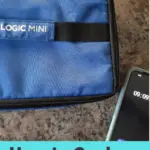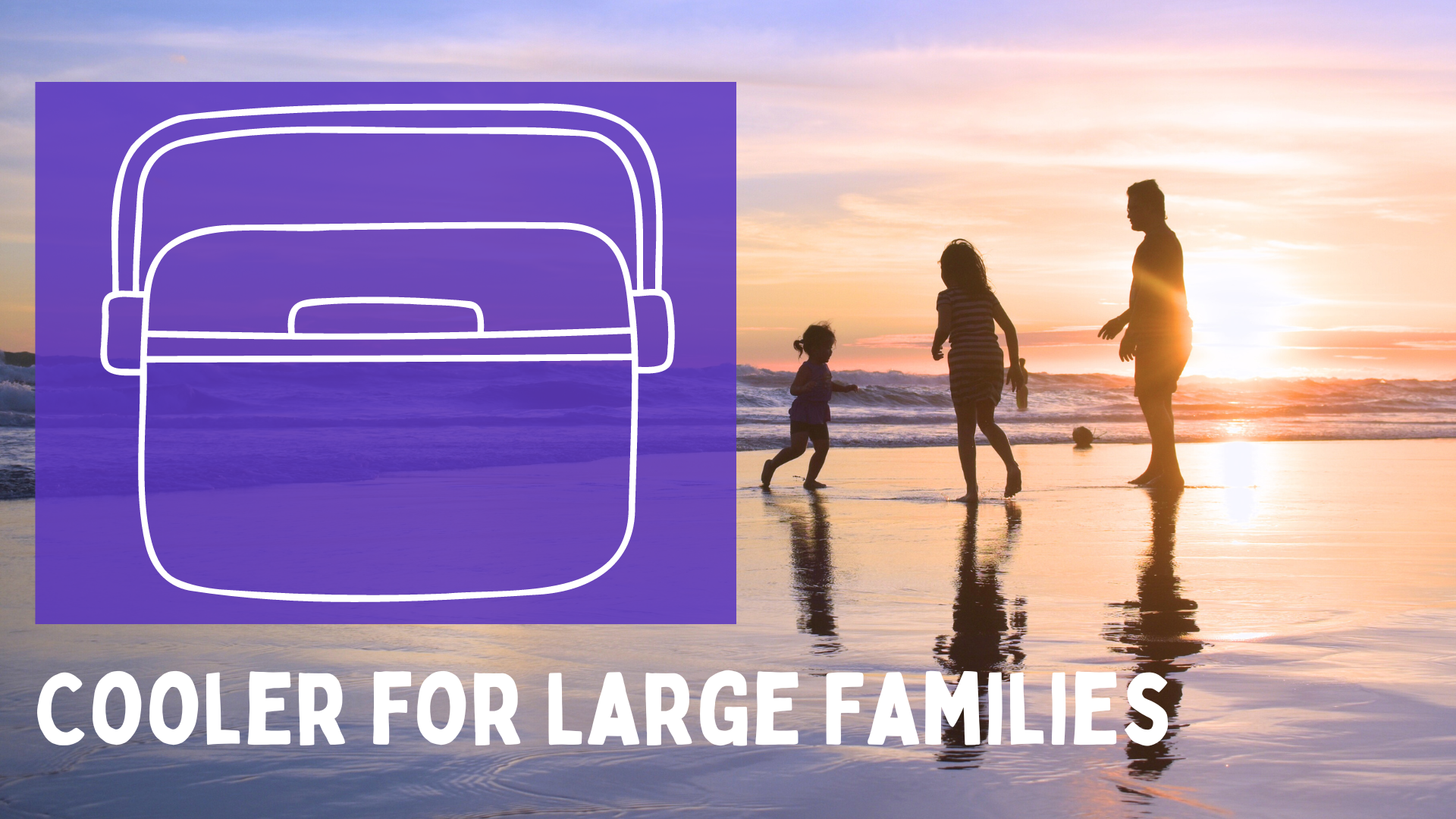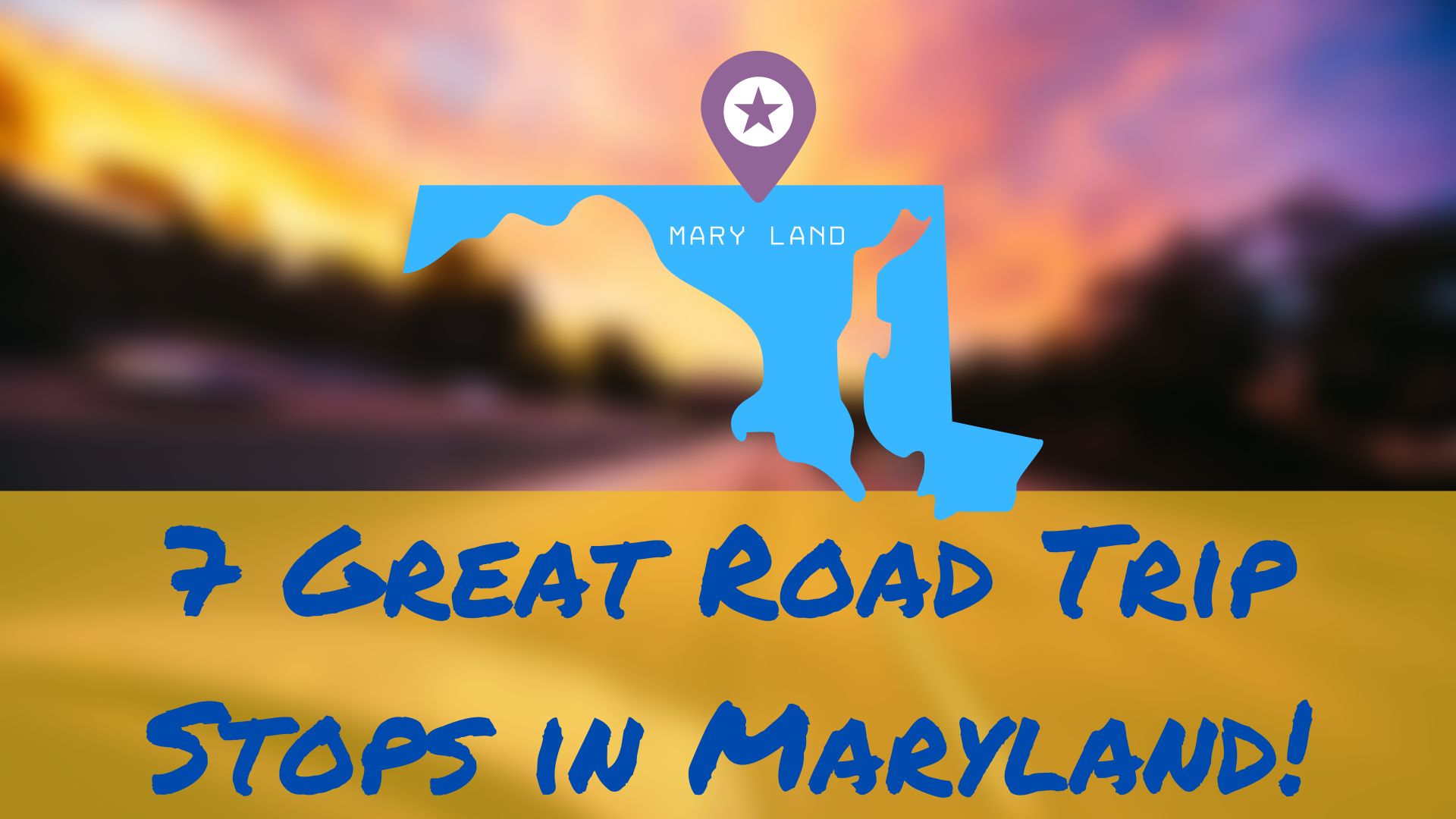VACATION! Are you ready to get to planning your dream long distance road trip?
Plan to divide up your long distance into legs. Make your legs between 300 and 400 miles and plan each leg as a mini trip. Be sure to have a plan for days when you will need to drive more than 6 hours. You should have two drivers or plan a mid day stop. Plan to eat three meals and pack plenty of water. Plan a variety of lodging.
If you want to follow along to plan your trip, you can download and print this worksheet.
Destination
Chances are you already have a destination in mind.
When you are planning a long distance trip which will cover many days, consider choosing a few interesting stops along the way using a tool like Roadtrippers or Within Hours.
These tools can help you discover stops along your route that will be fun and interesting or educational.
Divide up into Legs
Once you have your destination, enter it into a GPS or trip planning tool.
Divide your trip into smaller sections called legs.
I like to make my legs about 400 miles long. This is the distance my family feels comfortable driving in a day.
There are a lot of things to consider when dividing up the trip, there is a more in depth guide with all my tips on How Long Should You Drive Per Day.
Plan for your longer driving day to be the first day, you will all be fresher and happier to spend more time in the car at the top of the trip.
Within Hours is a great website that allows you to find cities that are within hours or within miles of your destination.
If you are driving to Texas from Missouri, 831 miles, you will want to make this 2 legs. To find a good stopping point enter Fort Worth, and within 450 miles.
You will look under North, and find:
So your legs would be St. Louis to Kansas City, then KC to Fort Worth.
Consider creating a Family Bucket List for the trip, and see how many amazing experiences you can have together. There is a free printable version at the link above.
Tips for Driving Long Distances
If your timeline requires driving more than 6 hours in a day, have a plan for how you will accomplish the long drive.
Here are the best strategies I have found:
Drive in a Team
When you have a lot of miles to cover, split up the driving.
I know my dad never wanted to give up driving duties, but this is the safest way to cover lots of miles.
Consider taking 2 hour shifts, then switch. This will keep both drivers fresh.
It might feel inconvenient to stop so frequently, so try to plan a few cool stops or use one of my Google Maps Hacks, especially numbers 7 & 8. Those are going to give you a quick way to find some cool local stops.
Stop Often
If you are driving alone, plan to stop frequently. This is the best way to stay awake and alert. Give yourself the freedom to explore and enjoy the trip.
Solo travel is a wonderful experience for many, so take time to enjoy the journey.
Sleep
Do not plan to drive more than 10 hours in a day.
If you are a single driver, and you cannot take shifts, do not plan to drive more than 10 hours in a day. It is dangerous as the driver is likely to become tired.
You can use caffeine to stay alert temporarily, and it has been shown to help keep drivers alert on long monotonous drives.
It is abundantly clear that driving while drowsy is seriously risky behavior and should be avoided. When you become sleepy, pull over and sleep for the night.
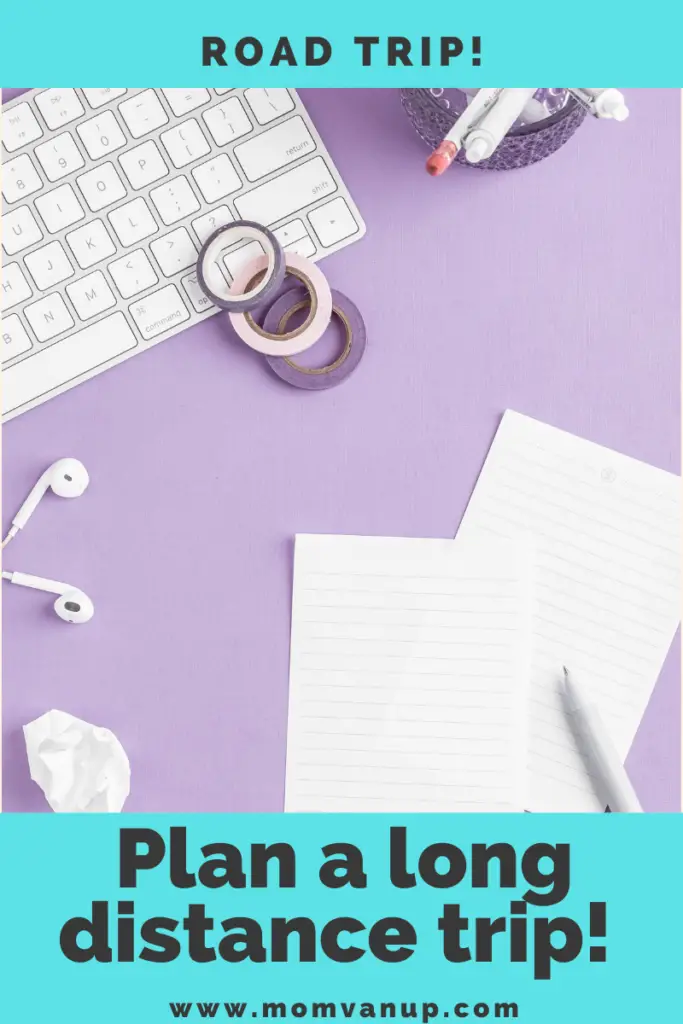
Find Lodging
Where to sleep!
When planning a very long distance road trip, you will likely need to sleep on the road. Plan to mix up your accommodations with a mix of convenient hotels and adventurous or interesting lodging.
Hotels
When you are on the road it is easy to find hotels. There are usually one or two at major highway exits.
A book like The Next Exit (affiliate) is a great addition to your road trip gear. You can look up the next exit and see what is available.
If you are members of a reward program, like Marriot or AAA, make sure to use those discounts.
AirBnB, Vrbo, Private Rentals
Renting from a private individual through sites like AirBnB, Vrbo or Turnkey are a great alternative to a hotel.
This is a great option for very large or very small groups. You can find a great deal on single rooms and entire houses.
We like to have a kitchen when we travel so AirBnB has a lot of options for us.
Just be sure to consider those cleaning fees.
Unique and Adventurous
I like to keep it cheap and adventurous, so I ALWAYS start looking for lodging on HipCamp.
HipCamp is designed for those who love the outdoors. They have features like filtering for running water, and map overlays to explore dark sky areas.
On HipCamp you can find things like trampoline tents, lots of yurts, wall tents, and open fields for camping.
I like to filter for lodging, so we can find cabins, cottages and tiny houses. We like to sleep indoors most of the time.
Lodging on HipCamp are often cheaper than hotels, but further off the highway.
You can also find unique lodging by hiring a local guide.
If you are traveling to a major city like New York, Los Angeles, Boston, St. Louis, or Las Vegas, you can find a local guide to help you plan your trip.
ShowAround is a site where you can contact individuals who live in the city to help you plan. Shoot them a message and see what you find.
Do not neglect the city websites. I have found some really interesting things by exploring the city website or the city visitor center.
Check to see if there is a visitor’s center in your destination and stop in!
We were actually just in a visitor’s center today and they had local history displays, local craft goods for sale, brochures and two really enthusiastic people who shared their love for the area.
Find Entertainment
When you are planning a long distance trip, don’t spend all your time driving!
Check in on that family bucket list and see what you can check off!
Start with the big things, if you are going to St. Louis, go see the Arch, if you are in New York, see Times Square.
Don’t stop there.
There are a few ways to find local favorites:
Hire a Local Guide
Tours By Locals offers travelers tours led by folks who regularly live in the city. Their prices are reasonable and they have a lot of tours available all over the country (and abroad).
You could also find a local guide through a facebook travel group. I enjoy “USA Road Trips Share Your Adventures” they have over 40k members at time of writing and everyone is very helpful.
An alternative would be to plan to visit friends.
When I travel to Maine, I don’t have to think about where to eat or sleep, my family will tell me where the best deals can be found.
Consider planning trips to visit family or friends.
Use Google Maps
Google Maps has a filter that allows you to see photos uploaded around you.
This is a great way to explore an area quickly.
I show you how to find this filter with screenshots in this post, it is number 8.
Use the photos to virtually explore the city, this visual search will surely turn up some hidden gems.
Visit the Visitor’s Center
Many cities have a visitor’s center where they have brochures and information about their city or state. They are often close to highway exits.
Our city has a few history displays and a gift shop with local crafts.
The people who work at the visitors center may also be able to give you suggestions of local places to see and things to do. They will have some ideas you may never have stumbled across online.
Organize Stops
Once you have found a few attractions you would like to visit, add them to your planning sheet.
Organizing your trip into legs will keep everything very organized.
I like to keep a 3 ring binder with divider tabs for each leg.
Print any tickets you purchase, or maps you print and add them to the binder.
When you start packing, make sure you pack by the leg of the trip. When you arrive you will only need to take out the bags that you need for that section of the trip.
This way you will have fresh clothes for each leg of the journey.
The Trip is Planned.. Now What?
Once you have the trip planned, it is time to get packing.
I recommend that you finish the basic planning 30 days before you plan to leave.
The main reason I recommend this is because the research shows that you will get the least travel stress if you are prepared a month in advance.
While you are planning, keep a running list of things you want to remember to pack. Add sunscreen to the list when you book the kayak tour, mosquito repellent when you book the campsite and so on.
When you are ready to start packing, get out all your packing equipment.
Packing Equipment
Get out all your luggage, and see if you need to fill in any gaps.
You will need:
1 Suitcase that can hold one days worth of clothes for everyone
1 toiletry bag that can hold everyone’s essentials
Packing Cubes or drawstring bags
Plastic Totes with lids
So here is the plan.
You will be making packing lists that will make it clear what you need each day. You will be packing by day, not by person, this is the best way to keep the car organized and to make sure you always have what you need when you need it.
You will use the packing cubes or drawstring bags to keep one outfit for each person for each day.
Then you pack those small bags into the totes.
When you arrive you pack the small bag into the large suitcase with the toiletry bag and you are set for the night.
We always use this system when we road trip, and I am convinced there is no other way.
Packing Lists
While you are planning, you made a list of any special equipment you would need for each day.
Things like swimsuits, bug spray, hiking boots, all need to be packed where you can get it on the day you need it.
Add these essentials to the packing lists.
Pack small bags, packing cubes or drawstring bags for each day of the trip. Label each bag so you know when to grab it.
Then pack special bags like: Swimsuits, jackets or ski gear.
I recommend that these bags be brightly colored and easy for any member of the family to find in a tightly packed car.
Food
When clothing and gear is all packed, it is time to turn your attention to food.
Plan to eat three meals a day and snacks.
Pack two pantry bags or clear totes, one for the trip there and one for the trip home.
When planning a long distance road trip, covering 2 weeks or more, plan to just keep a pantry. A tote that fits under a seat that holds foods that will keep that long, shelf stable or canned foods.
Make a meal plan.
How to Eat on a Road Trip is full of my whole system and a LONG list of meal ideas. If you have no idea what to eat in the car, start there.
You can go classic and bring cold food and a cooler, or you can get a Hot Logic (affilliate).
Here are my best lists of road trip food inspiration: Hot Logic Lunch Ideas, No Prep Lunches, and How to Eat on a Road Trip.
We always bring a Hot Logic Mini and it is a game changer. It is like a slow cooker for the car. Here I am singing its praises for a collab I did on YouTube.
There are also a few other ideas on How to Cook on a Road Trip. These ideas almost all use a Hot Logic!
Pack the Car
When it is time to go, tetris everything into the car, but if you want a little more leg room consider a Roof Box or a Cargo Hitch.
As a kid I only knew a roof box as a bubble. That is what we called it, “Put it in the bubble!” Anyway, a roof box attaches to the roof of the car and can carry bags you will not need to access while driving.
We have not used one, because we drive a passenger van, and I tell you why I think it is a great family car in this post.
If you drive a full sized van, do not use a roof box as it increases the chance of roll over, which is already high in these vehicles.
Check your car’s manual to see if a roof box is safe on your car. If you know rollover is a concern, skip it.
Consider a cargo hitch rack.
This is our preferred method of expanding our cargo room. I like this type found on Amazon for under $300 (Affiliate). It is deeper and has more significant side rails.
These attach to your car’s hitch and come in lots of configurations.
They are open to the elements, so do not pack them with anything that you don’t want outside. We tend to use ours for bulky items that we will not need until we arrive.
Many families store items in totes like these on Amazon, then strap the totes to the hitch. I like the idea for dirty laundry, sandy beach toys or extra water bottles.
Plan the Drive
Once all the planning is done and everything is in the car, let the fun begin!
Do not wait till you arrive to start connecting and making memories. Here are my best ideas for fun on a road trip.
Fun
Playlist
Make a trip playlist, consider allowing everyone to contribute to this list.
This is a classic road trip tradition and for the rest of your lives these songs will remind you of this trip.
Audiobooks
Another way to create a shared experience is with audiobooks.
Choose a story and listen together. This is a great way to get excited about the destination your are visiting by choosing a story that takes place there or a non fiction title about the area.
You could also use this time to learn about a shared value like zero waste living, politics, family life or marine exploration!
If you are looking for inspiration, I have got to recommend Read Aloud Revival. They have book lists for every topic and every age and stage.
Our favorites have included:
Little House Series
A Wrinkle in Time
The Sara Plain and Tall Series
Five Little Peppers and How They Grew
Podcasts
Podcasts are another great way to learn something new as a family.
If you are on a very long trip, consider listening through a longer series or alternating between music and podcasts. Keep it fresh.
Games
Don’t forget classic road trip games like the license plate game and the alphabet game. I bet your kids have never played these before and it is your duty to pass on these ancient ways to passing the time on the road.
Rest Stops and Bathroom Breaks
Plan to stop every 2 to 4 hours to stretch and use the bathroom.
You can use Google Maps to find great rest stops, I give all the details and screenshots in this in depth post.
A resource like The Next Exit book (linked above) can also be helpful here.
On a long distance road trip with children, bring a potty seat. We use a simple one we bought at Walmart, and it fits right under the seats in our Chevy Express.
This is a lifesaver when you just do not have time for a real bathroom break. Always stop the car before unbuckling any children.
We also use the potty seat for the kids after eating at a restaurant or watching a movie. It is just easier to be in your own space.
Safety
Now that you are on the road, consider a few basic safety precautions so that you are sure to have a successful trip.
Maps
Carry a paper map in case of a technology failure.
If you live in or close to a major city, you may not consider that you may be without navigation, but even a few hours outside of the city it may not be available.
Many places are remote and cell phone GPS is unavailable. We just went camping and found ourselves in this situation. We asked for directions, but once we pulled out of the campground we were on our own.
If you want the best, choose a Rand McNally Atlas (Affiliate), less than $10 and you have all the US and Canada with a bit of Mexico.
You can also download your Google Maps to use offline, or print paper maps while at home.
Whichever method you choose, have backup navigation.
Water
Keep enough water in the car to keep you comfortable in the case of a long highway stop.
A pack of water bottles for a long trip is a great idea, or a stash of reusable bottles and a few jugs.
We were recently on a short 5 hour road trip when there was a terrible accident just a mile or so ahead of us. I was stopped on the highway for TWO WHOLE HOURS with my 4 kids.
I was SO thankful for water. I ended up passing it out to a few fellow stranded motorists.
Security
I am sure your trip will go fine, but just in case, be prepared with a few basics.
Make sure all your locks are in working order. If you end up needing to stop and sleep, you will be glad you did.
A sun shade for your windshield can add to a feeling of privacy and it can block the view of pedestrians into your car.
Know local police numbers for anywhere you are staying overnight.
I will repeat, bring maps. This will give you lots of options if you need to quickly change plans.
Document
Whew! Now that you are finally on your trip, be sure to document!
Take pictures, but also write down a few notes.
I think a family journal is a great way to record memories on a trip, invite everyone in the family to add their favorite memories or their thoughts to the road trip journal.
Here is how I set up my family journal.
Display an artifact from your trip.
Make sure everyone remembers the trip by displaying a reminder in your home.
I like to collect a ring of Do Not Disturb door hangers, but it can be as simple as a photograph.
Use a command strip to attach a clothes pin to the wall, and clip up some photos.
No matter what you do, document the trip.
Shared memories strengthen relationships and remembering the trip can reduce stress.
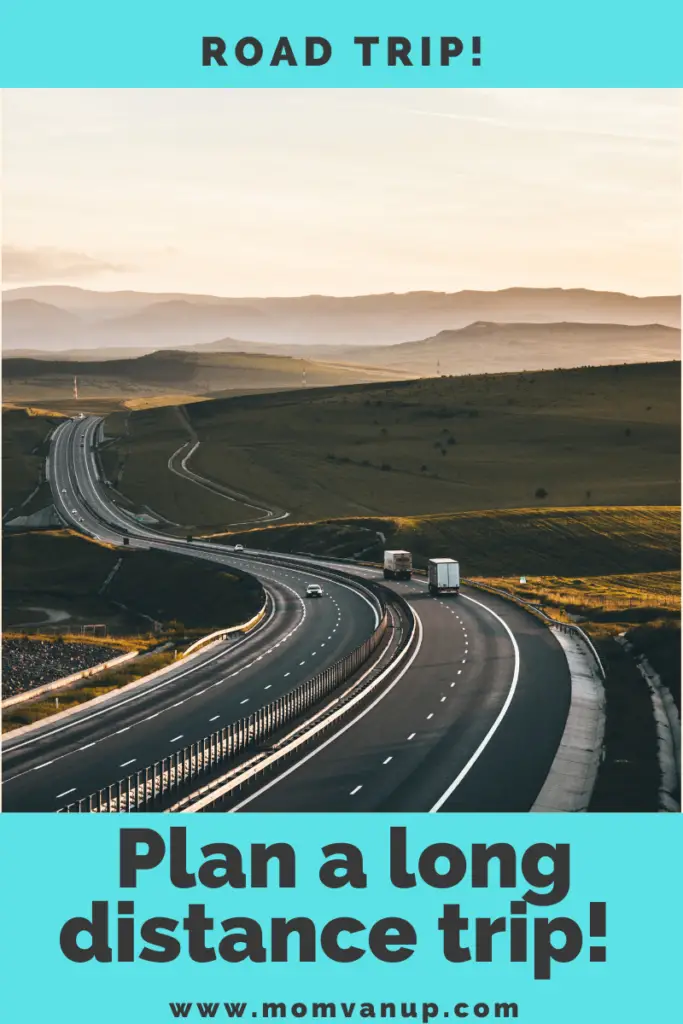
Plan the Next One
I fell down a rabbit hole of vacation stress research a few months back and learned about the power of anticipation.
Planning a trip a month in advance had stress reducing effects on vacationers.
So, if you are feeling stressed, start planning the next vacation.
If you want to go big with this one, go print my annual vacation budget printable and learn to budget for a whole year of stress free vacations.

